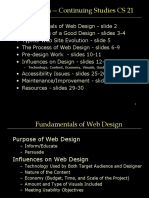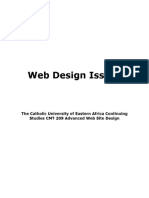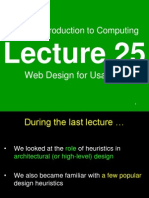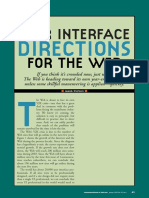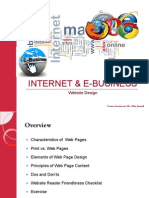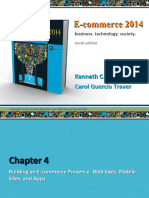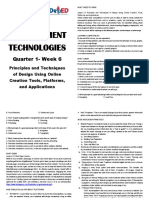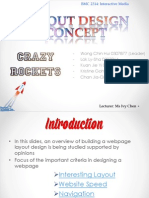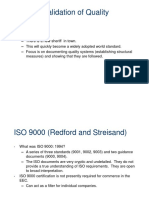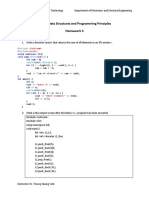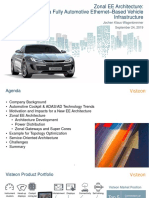0% found this document useful (0 votes)
254 views18 pagesWeb Design Essentials for Developers
This document discusses principles of good web design. It emphasizes that content alone is not enough - the design must be understandable, interesting, easy to use, and consistent. Good design considers the visitor's perspective. Pre-design work like planning, content organization, and wireframing is important. The influences of technology, content, and usability should guide design choices. Response time, memory cues, readability, and providing feedback are important usability factors. Cutting-edge tools should enhance the experience, not just attract attention.
Uploaded by
Cheah BlufferCopyright
© © All Rights Reserved
We take content rights seriously. If you suspect this is your content, claim it here.
Available Formats
Download as PDF, TXT or read online on Scribd
0% found this document useful (0 votes)
254 views18 pagesWeb Design Essentials for Developers
This document discusses principles of good web design. It emphasizes that content alone is not enough - the design must be understandable, interesting, easy to use, and consistent. Good design considers the visitor's perspective. Pre-design work like planning, content organization, and wireframing is important. The influences of technology, content, and usability should guide design choices. Response time, memory cues, readability, and providing feedback are important usability factors. Cutting-edge tools should enhance the experience, not just attract attention.
Uploaded by
Cheah BlufferCopyright
© © All Rights Reserved
We take content rights seriously. If you suspect this is your content, claim it here.
Available Formats
Download as PDF, TXT or read online on Scribd
/ 18

